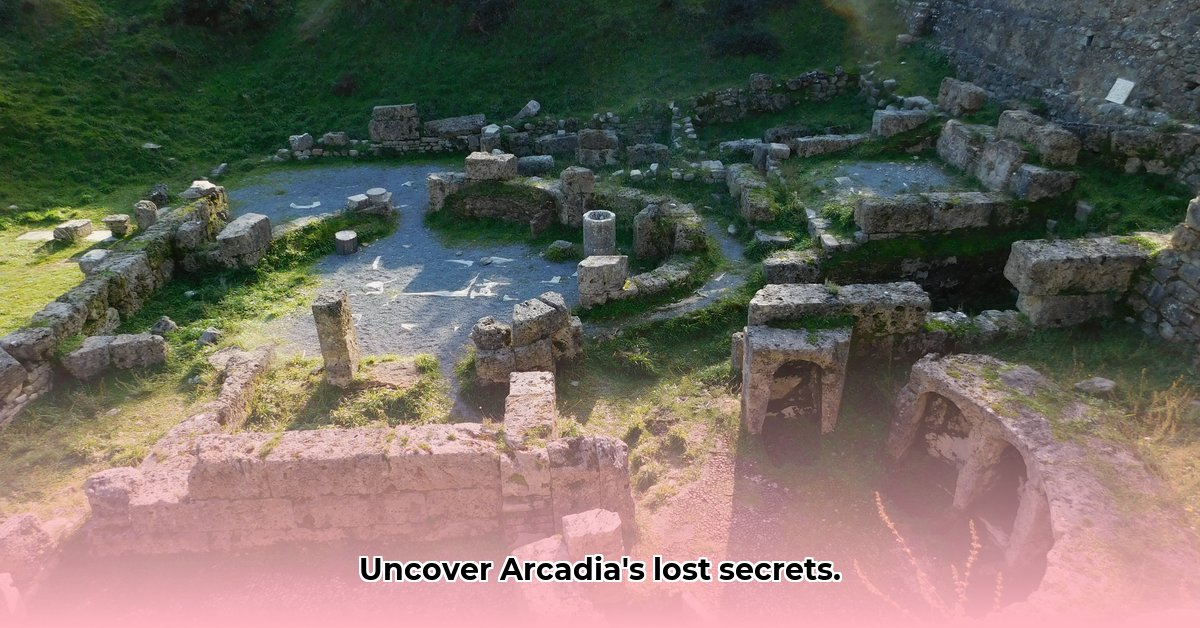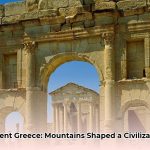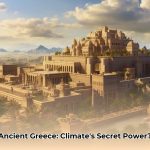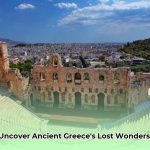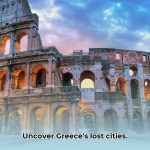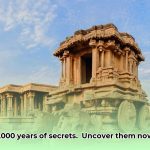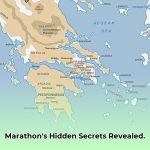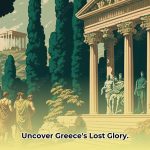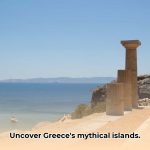Have you ever heard of Arcadia? It’s more than just a fantastical, idyllic dreamland—it was a tangible region in ancient Greece, a place brimming with intriguing history, powerful myths, and a distinctive landscape that profoundly shaped its identity. For more on ancient Greek geography, check out this helpful resource: Ancient Greece geography. Let’s embark on a journey to the heart of Arcadia, exploring its formidable mountains, surprisingly intricate political systems, and the enduring myths and legends that continue to captivate us today. We’ll delve into how the physical environment influenced its inhabitants, how they structured their society, and how their narratives intertwined with the broader tapestry of ancient Greek culture. Prepare to uncover the captivating secrets of a realm where myth and reality converge, leaving behind a legacy that continues to inspire and intrigue.
Ancient Arcadia: Myths, Power, and Geography
Ancient Arcadia. The name itself evokes images of idyllic landscapes and rustic simplicity. However, the reality of this mountainous region in the central Peloponnese was considerably more intricate, a fusion of geographical challenges, disparate political entities, and a rich cultural identity that persists in captivating our imaginations. Let’s delve into the compelling narrative of this often-overlooked corner of ancient Greece and its ancient ruins, revealing the layers of history and myth that define it.
The Land of Arcadia: Mountains, Valleys, and Isolation
Picture a land meticulously sculpted by nature’s hand: imposing peaks that pierce the sky, deep valleys carved by swift rivers, and dense forests clinging tenaciously to steep slopes. This is Arcadia. This rugged terrain served as more than just a scenic backdrop; it was a defining characteristic of Arcadian existence. The mountains acted as natural barriers, isolating the region’s various communities from one another and from the influences of more powerful city-states along the coast and its mountain ranges. This geographical isolation is a primary factor in why Arcadia never coalesced into a single, unified kingdom akin to Sparta or Athens. Instead, it remained a collection of smaller, independent villages and towns, each possessing its own distinct character and frequently competing interests.
Consider the logistical challenges inherent in transporting goods and people across this landscape. Travel between settlements would have been arduous, and at times even perilous. While this isolation presented obstacles to certain aspects of development, it simultaneously fostered a robust sense of community and self-reliance. Arcadians were compelled to depend on their own resources, consequently cultivating a unique culture that celebrated their profound connection to the land. Their economy was predominantly based on pastoralism – raising sheep and goats on the verdant hillsides – supplemented by limited farming activities in the more fertile valleys. Life was not without its difficulties, but they adapted and thrived. They became adept at navigating their challenging environment and its regional boundaries. The Alpheios and Ladon rivers also played a crucial role, providing essential resources.
Power Struggles and Fleeting Alliances: The Politics of Arcadia
In contrast to its neighbors, Arcadia never established a durable, unified state. Instead, it remained a mosaic of independent communities, perpetually vying for power among themselves and frequently caught in the midst of larger regional conflicts. Sparta and Athens, for instance, often projected their influence onto Arcadian affairs, sometimes manipulating the smaller communities as pawns in their own strategic games. How did this internal conflict shape Arcadia’s interactions with other regions, and what strategies did they employ to maintain a degree of autonomy?
Numerous attempts were made to forge alliances and leagues—the Arcadian League stands out as a prominent example—but these federations were often ephemeral, fragile, and ultimately unsuccessful in achieving lasting unity. Internal disagreements and rivalries consistently undermined efforts toward centralized governance. However, this persistent fragmentation does not diminish Arcadia’s significance; it simply indicates that power manifested differently. They played a crucial role in the broader narrative of ancient Greece, even if they did not function as a single, dominant entity. Their capacity to endure and sustain a measure of independence despite their political divisions is, in itself, a remarkable accomplishment and its political autonomy, showcasing the resilience and adaptability of the Arcadian people. The role of key figures like Epaminondas in shaping Arcadian alliances further underscores the complexity of their political landscape.
Arcadia in Myth and Reality: Shepherds, Gods, and a Timeless Image
Arcadia occupies a distinctive position in Greek mythology and literature. It is frequently depicted as a pastoral paradise, a land of unspoiled beauty inhabited by shepherds, nymphs, and other mythical beings. Pan, the god of shepherds, flocks, and rustic music, became a central figure in Arcadian mythology, embodying their intimate connection to the land and their agrarian way of life. To what extent does the mythical depiction of Arcadia reflect the lived experiences of its inhabitants, and what purposes did this constructed narrative serve?
While the portrayal of Arcadia as a rural utopia is, in part, a romanticized interpretation, it reflects a genuine facet of Arcadian identity. The Arcadians themselves likely embraced this image, emphasizing their separation from the complexities and perceived corruption of urban centers. Their literature and myths likely celebrated their simple lifestyle, their rugged independence, their deep-seated connection to nature, and their resilience in the face of adversity and its mythological significance. Furthermore, the cult of Despoina, with its mysteries and unique traditions, added another layer to Arcadia’s rich mythological tapestry.
Unraveling the Mysteries: Future Research on Ancient Arcadia
Our understanding of ancient Arcadia is continuously evolving as new archaeological discoveries are made and existing sources are re-evaluated. Many questions remain unanswered, and numerous avenues of research promise to further illuminate this fascinating region and its cultural heritage:
- Literary Sources: Discovering lost or overlooked texts and re-interpreting existing works in light of new archaeological findings.
- Archaeological Evidence: Excavating new settlements and analyzing artifacts to gain deeper insights into daily life, trade networks, and interactions with neighboring regions.
- Political Organization: Clarifying the internal dynamics of Arcadian leagues, examining the factors that contributed to their instability, and understanding the complexities of their alliances and conflicts.
- Environmental Studies: Analyzing pollen records and other environmental data to reconstruct the ancient Arcadian landscape and understand how it changed over time due to human activity and natural processes.
- Genetic Research: Studying the genetic makeup of modern Arcadians to determine their relationship to ancient populations and to trace patterns of migration and settlement in the region.
The study of ancient Arcadia is an ongoing endeavor. While significant progress has been made, mysteries persist, inviting future generations of scholars to continue unraveling the rich and intricate history of this remarkable region. The more we learn, the richer and more nuanced our understanding of ancient Arcadia becomes. It’s a story that continues to unfold, revealing new facets with each discovery.
How to Analyze Arcadia’s Political Structures Using Ancient Greek Texts
Key Takeaways:
- Arcadia’s political landscape was initially characterized by fragmentation, with numerous independent city-states vying for power.
- A shared Arcadian identity, rooted in myth, culture, and a sense of autochthony, gradually emerged, laying the groundwork for eventual political unification.
- External pressures, particularly Sparta’s aggressive policies, played a critical role in the unification of Arcadia.
Arcadia’s Fragmented Past
Imagine a patchwork quilt, with each piece representing a separate city-state, each vying for power and influence. This aptly describes early Arcadia. Numerous independent communities, often aligning themselves with external powers like Sparta, dominated the political landscape. How did this dynamic evolve, and what factors contributed to the eventual push for unification? Answering this question requires a thorough understanding of how to analyze Arcadia’s political structures using ancient Greek texts and a deep appreciation of its historical context. Furthermore, it necessitates considering the social and economic disparities between these city-states and how these differences shaped their political trajectories.
To gain a comprehensive understanding, we must move beyond simplistic narratives and delve into the intricacies of ancient Greek writings. These texts reveal a complex picture, one where the development of a unified Arcadia was a gradual and multifaceted process, rather than a sudden and decisive revolution.
The Power of Myth and Identity
Prior to political unification, a shared Arcadian identity existed, although it was primarily cultural and mythical in nature. Stories of Arcadian autochthony (indigenous origin) and the revered sanctuary of Zeus Lykaios fostered a sense of shared heritage and common ancestry. These myths, deeply ingrained in the fabric of Arcadian society, provided a foundation for the later development of political unity and its cultural identity. The establishment of common religious festivals and athletic competitions, such as the Lykaia, further solidified this shared identity.
However, the crucial question remains: how did these myths translate into tangible political action? This is where a meticulous analysis of diverse literary sources becomes essential. Some accounts emphasize a pre-existing sense of unity, highlighting shared customs and traditions, while others underscore the deliberate construction of a pan-Arcadian identity through strategic propaganda and manipulation of collective memory. By carefully comparing these narratives, we can gain valuable insights into the complex evolution of Arcadian self-perception.
The Spartan Shadow and the Catalyst of Leuctra
Sparta, a dominant power in ancient Greece, exerted considerable influence over Arcadia, often intervening in its internal affairs and projecting its military might. This constant pressure from Sparta, often leading to open conflict, inadvertently contributed to the eventual creation of a unified Arcadia and its military campaigns. The Spartan defeat at Leuctra in 371 BCE, at the hands of the Theban general Epaminondas, marked a decisive turning point in Arcadian history. This pivotal event provided Arcadia with the opportunity to consolidate its independence and chart its own course. Anti-Spartan sentiment, which had long simmered beneath the surface, rose to the forefront, fueling the drive for unity and self-determination.
The rise of a unified Arcadia is not merely a tale of military triumph; it is also a story about the forging of a common identity, the strategic leveraging of pre-existing cultural elements, and the deliberate manipulation of narratives for political gain. The role of individuals like Lycomedes of Mantinea in advocating for Arcadian unity should also be considered.
Deciphering the Evidence: Coins, Inscriptions, and Texts
How to analyze Arcadia’s political structures using ancient Greek texts necessitates a multifaceted approach, drawing upon a wide range of evidence. We must examine not only literary texts, but also archaeological finds, inscriptions, and numismatic data. The Arkadikon coinage, for example, remains a subject of considerable debate among scholars. Did it represent a nascent pan-Arcadian organization, symbolizing a shared economic and political identity, or was it primarily a tool employed by Tegea, a powerful city within Arcadia, to assert its regional dominance and control over trade routes? Could analyzing such artifacts shed light on the socio-economic factors that influenced Arcadia’s political development?
Epigraphic evidence—inscriptions on stone—provides additional clues. These inscriptions, often found on public buildings, temples, or monuments, offer valuable insights into local laws, alliances, political structures, and religious practices. By comparing this evidence across different Arcadian sites, we can construct a richer, more nuanced picture of the region’s political evolution.
The interpretation of archaeological finds requires careful consideration and a critical approach. We must meticulously assess the context of discovery, the dating of artifacts, and potential biases in their preservation and interpretation. This demands a critical analysis of potential interpretations to avoid misrepresenting the data and drawing unfounded conclusions.
A Deeper Dive: Ongoing Research
Further research is essential to deepen our understanding of Arcadia’s political structures and the factors that shaped its history. There is much to uncover regarding the role of smaller Arcadian communities in the unification process, the impact of social and economic inequalities on political stability, and the long-term implications of the Arcadian League on later political structures. Scholars continue to investigate the complex interplay between local and regional identities, examining how individuals and cities strategically utilized both to achieve their political aims. Understanding these political ideologies could give us valuable insight into the motivations and aspirations of the Arcadian people. Furthermore, exploring the influence of religious institutions and practices on political decision-making could provide a more holistic understanding of Arcadian society.
Pretzler, VI. Arcadia: Ethnicity and Politics in the Fifth and Fourth Centuries BCE.
Arcadian Daily Life and Social Structures in the Classical Period
Key Takeaways:
- Arcadia’s image as a pastoral paradise, though romanticized in literature and art, often obscures a complex history characterized by shifting political allegiances, internal power struggles, and diverse social structures.
- Arcadian Daily Life and Social Structures in the Classical Period were primarily agrarian and localized, reflecting the region’s mountainous terrain and the relative isolation of its communities.
- The formation of Megalopolis in 371 BCE marked a significant shift towards political consolidation, with profound and lasting impacts on daily life and social structures across the region.
The Arcadian Landscape: Shaping Life and Society
Picture a rugged, mountainous region nestled within the heart of the Peloponnese. This was Arcadia, a land of fertile valleys, dense forests, and verdant pastures. Its unique geography played a crucial role in shaping the lives of its inhabitants, influencing their economic activities, social interactions, and cultural values. Its topography dictated a largely self-sufficient existence, with communities focused on agriculture, pastoralism, and small-scale craft production. This relative isolation fostered strong local identities, with villages and small towns—poleis—wielding significant influence over the lives of their citizens. Before the emergence of Megalopolis, how unified was Arcadia really? Was there a cohesive and widely recognized Arcadian identity, or merely a collection of independent communities bound together by geographical proximity and a shared cultural heritage? One must consider the diverse economic systems that prevailed across the region when considering this question, as these systems often shaped the political allegiances and social hierarchies within individual communities.
Political Structures: From Fragmentation to Unity
Early historical sources suggest a notable lack of overarching political unity in Arcadia. Instead, the region was characterized by competing poleis, shifting alliances, and regional rivalries. Therefore, it is more accurate to envision Arcadia not as a single, unified entity, but as a mosaic of independent, often rivalrous, communities, each striving to protect its own interests and autonomy. The cities of Tegea and Mantinea, for instance, were frequent rivals, engaging in territorial disputes and vying for regional influence. This internal strife profoundly shaped Arcadian Daily Life and Social Structures in the Classical Period, influencing everything from economic activity and trade relations to social hierarchies and cultural practices. However, external pressures from powerful neighbors, most notably Sparta, eventually propelled Arcadia towards political consolidation, albeit often reluctantly and sporadically. The establishment of Megalopolis in the 4th century BC marked a pivotal turning point in Arcadian history; it signaled a decisive shift towards a more unified political structure, centralized administration, and a more cohesive regional identity, thus providing a window into its civic administration.
Daily Life and Social Structures: A Pastoral Ideal?
The idyllic image of Arcadia, frequently perpetuated by poets like Virgil and Theocritus, depicts a harmonious existence centered on farming, shepherding, and a close-knit community, where individuals lived in peace and contentment, undisturbed by the complexities and stresses of urban life. While aspects of this idealized vision likely held true—Arcadians were primarily agriculturalists and pastoralists, and strong community bonds were essential for survival in a challenging environment—it is crucial to remember that this was not a static or uniformly peaceful reality. Internal conflicts, external pressures, and social inequalities profoundly affected Arcadian Daily Life and Social Structures in the Classical Period. What exactly constituted “daily life” must be carefully considered, taking into account the diverse experiences of different social groups, including farmers, shepherds, artisans, and elites. How did the realities of conflict, competition, and social stratification shape the fabric of Arcadian society? Scholars continue to grapple with these complex questions, drawing upon archaeological evidence, textual sources, and comparative studies to reconstruct a more nuanced picture of Arcadian society. The formation of leagues and eventually Megalopolis certainly altered daily routines, economic activities, and social hierarchies, creating new opportunities and challenges for the Arcadian people through its urban development.
Arcadian Identity: A Complex Tapestry
The very concept of a unified “Arcadian” identity is itself a subject of ongoing scholarly debate and critical inquiry. Was there a shared culture that transcended local differences and regional rivalries? Did Arcadians speak a common dialect, adhere to shared religious practices, or subscribe to a common set of cultural values? The archaeological evidence, interpretations of literary sources, and numismatic findings all contribute to a complex and often contradictory picture. Did the “ARKADIKON” coinage symbolize a pan-Arcadian ideal, reflecting a shared economic and political identity, or was it primarily linked to specific poleis like Tegea, serving to promote its own regional interests? This is a question that continues to challenge researchers, prompting them to re-examine existing evidence and seek new sources of information. The answer lies in carefully examining the archaeological record, meticulously studying textual evidence, and critically evaluating the competing interpretations offered by scholars from diverse perspectives. Understanding this also hinges on the intricate social dynamics of Arcadia, including the relationships between different social classes, the role of women in society, and the prevalence of slavery.
Ongoing Research and Debates
Numerous questions remain, inviting further research and analysis. How accurately do literary depictions of Arcadia reflect the historical realities of daily life and social structures? What was the nature of social interaction in a city like Megalopolis, with its diverse population and complex urban environment? What exactly did “Arcadian” identity mean in practice for the people who lived there, and how did this identity evolve over time? These are just some of the many open questions that researchers are currently exploring. Further archaeological excavations, combined with in-depth analysis of textual and material evidence, are crucial for a more nuanced comprehension of this fascinating region. What are the future prospects for continued study, and what new methodologies and technologies can be employed to shed light on the mysteries of ancient Arcadia?
Influence of Arcadian Geography on Artistic Representations in Ancient Greece
Arcadia, nestled among the mountains of ancient Greece, was more than just a place on a map; it was a source of artistic inspiration and a potent symbol in the Greek imagination. Its rugged beauty, secluded valleys, and untamed landscapes profoundly influenced its artistic portrayal, shaping how it was perceived and represented in various forms of Greek art and literature. How exactly did this unique geography translate into artistic expression, and what cultural values did it come to embody? Let’s delve into the ways in which the Arcadian landscape shaped the artistic representations of the region and consider its enduring cultural impact.
The Rugged Muse: Arcadia’s Landscape in Art
Picture a land of towering peaks, dense forests teeming with wildlife, and hidden pastures where shepherds tended their flocks – this was Arcadia. This challenging terrain, far from hindering artistic expression, actively fueled it, inspiring artists to create images that celebrated its natural beauty and the simple life of its inhabitants. These artists weren’t just depicting physical places; they were portraying an idea, a vision of an ideal existence in harmony with nature. Arcadia became synonymous with a simple, pastoral life untouched by the complexities, corruptions, and distractions of urban existence. This perception, powerfully reinforced by poets like Theocritus and Virgil, deeply influenced the artistic representation of the region and the artistic mediums used to represent it, from painting and sculpture to poetry and music.
The Influence of Arcadian Geography on Artistic Representations in Ancient Greece is readily apparent in depictions of idyllic scenes that evoke a sense of tranquility, harmony, and natural abundance: shepherds tending their flocks in sun-drenched meadows, nymphs frolicking in clear streams beneath the shade of ancient trees, and Pan, the god of the wild, lurking in the shadows of remote forests. These scenes, far from being mere landscapes, became potent symbols, representing a yearning for a purer, simpler, and more authentic existence – a stark contrast to the perceived decadence and artificiality of the bustling city-states. What were the primary themes explored in Arcadian art, and how did these themes reflect the cultural values and beliefs of the ancient Greeks?
Think of the bucolic scenes painted on pottery, adorning the walls of villas, or sculpted in relief on sarcophagi and public monuments. They don’t just show trees and mountains; they tell a story about the human spirit’s enduring desire for harmony with nature, a longing for a simpler way of life, and a profound appreciation for the beauty and tranquility of the natural world. The very challenges of the Arcadian landscape—its inaccessibility, its wildness, its remoteness from the centers of power—contributed to its idealized image, transforming it into a sanctuary, a refuge where the pressures of civilization seemed far away and the human spirit could find solace in the embrace of nature.
Arcadia’s Political Landscape: A Complex Reality
The artistic portrayal of Arcadia often overlooks its complex political realities, simplifying or even ignoring the intricate power dynamics, shifting alliances, and frequent conflicts that characterized the region’s history. Numerous independent city-states dotted the Arcadian landscape, each with its own political institutions, economic interests, and social hierarchies. However, the idyllic image of Arcadia as a peaceful and harmonious land persisted, perhaps as a counterpoint to the political turmoil and social unrest of the larger Greek world, or as a reflection of the human desire for stability and peace in a turbulent era. How could political instability and an idyllic depiction coexist in the artistic representations of Arcadia, and what factors contributed to the enduring appeal of this idealized image?
This disparity between the idealized and the actual Arcadian political reality highlights a fundamental aspect of artistic interpretation: artists often selectively emphasize certain elements while downplaying or omitting others, shaping their representations to align with prevailing cultural ideals, aesthetic preferences, and political agendas. The enduring appeal of Arcadia’s pastoral image likely overshadowed the historical complexities of its political structures in artistic representations, reflecting a broader tendency to idealize rural life and romanticize the relationship between humans and nature.
The Enduring Legacy: From Antiquity to Modernity
The Influence of Arcadian Geography on Artistic Representations in Ancient Greece continues to reverberate through the centuries, shaping our understanding of nature, simplicity, and the human longing for a harmonious existence. The Arcadian ideal, born from its geographical reality and carefully cultivated through artistic and literary traditions, has had a profound and lasting impact on Western culture, influencing art, literature, music, and philosophy. It is a powerful testament to the lasting impact of geography on both the cultural imagination and artistic expression, demonstrating how a specific place can become a symbol of universal human values and aspirations. The idealized image of Arcadia, carefully crafted through artistic and literary tradition, transcends historical accuracy, becoming an emblem, a mythos, a powerful symbol that continues to inspire and resonate within us, shaping our perceptions of nature, society, and the human condition, and highlighting the artistic techniques employed by ancient Greek artists to convey these complex ideas and emotions.
Key Takeaways:
- Arcadia’s mountainous terrain and isolated location directly contributed to its unique artistic representation as a pastoral paradise.
- The idealized image of Arcadia often contrasted sharply with the region’s complex political reality and the social inequalities that existed within its communities.
- Artists selectively emphasized certain aspects of Arcadia to align with prevailing cultural ideals, aesthetic preferences, and philosophical beliefs.
- Discover Ancient Greek Furniture: A History of Design and Influence - August 12, 2025
- Explore the Marathon Ancient Greece Map: A New Perspective on the Iconic Battle - August 12, 2025
- Explore Ancient Greece Drawings: Styles, Periods and Enduring Examples - August 12, 2025
